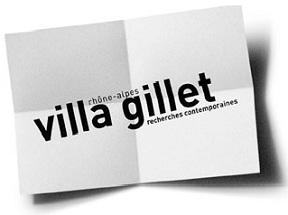Helen Oyeyemi on haunted house novels
![[title-image]1332154738673[/title-image] oyeyemi-cre-dit-saneesh-sukumaran-1_1340024204865.jpg](https://cle.ens-lyon.fr/anglais/images/oyeyemi-cre-dit-saneesh-sukumaran-1_1340024204865.jpg)
Helen Olajumoke Oyeyemi (born 10 December 1984) is a British novelist. Oyeyemi wrote her first novel, The Icarus Girl, while still at school studying for her A levels at Cardinal Vaughan Memorial School. Whilst studying Social and Political Sciences at Corpus Christi College, Cambridge, two of her plays, Juniper's Whitening and Victimese, were performed by fellow students to critical acclaim and subsequently published by Methuen.
Les éditions Christian Bourgois publieront en novembre 2012 un recueil en français des textes écrits à l'occasion des assises du roman.
"No live organism can continue for long to exist sanely under conditions of absolute reality; even larks and katydids are supposed, by some, to dream. Hill House, not sane, stood by itself against its hills, holding darkness within; it had stood so for eighty years and might stand for eighty more. Within, walls continued upright, bricks met neatly, floors were firm, and doors were sensibly shut; silence lay steadily against the wood and stone of Hill House, and whatever walked there, walked alone.”
That’s how Shirley Jackson opens her novel The Haunting of Hill House. Habitation is in itself a form of haunting, whether that’s a tribe that settles on a particular piece of land, a family in a home or the mind in the body. It’s necessary that we live within structures; it’s part of the order of life. But our structures can make monsters of us. We’re all ghosts in the societal machine, moving through the world carrying with us ancestors, linguistic frameworks and the results of decisions made by governments long before we were born. One way or another these factors show themselves – in our physical appearance, in the way we speak and think, and so on. No wonder we so often frighten each other, no wonder we sometimes look into the eyes of people we’ve ‘known’ for decades and see an abyss. Collectively we’ve tried to contain the anxiety of that kind of experience by qualifying it and giving it various names. I’ll use a vaguely literary one - jamais vu.
You read of extreme cases of jamais vu in the newspapers. There was one recently involving a husband who, after eighteen years of happy stability with his wife, told her he had a surprise for her. He blindfolded her, then ‘hit her over the head with the blunt end of an axe, fracturing her skull in three places.’ She survived and tried to forgive him, even vouched for his good character in court. The husband-turned-attacker, unable to explain his moment of terminal hostility, deferred to psychiatrists who offered the opinion that it was his past that had caused it. This man’s father, who he’d held responsible for his sister’s suicide, had recently died. According to the psychiatrists, that death had unlocked the trauma that had been living in this man. Put it that way and it sounds like the kind of grief that Millay wrote about:
And must I then, indeed, Pain, live with you
all through my life? – sharing my fire, my bed,
Sharing – oh, worst of all things!-the same head? –
And, when I feed myself, feeding you too?
Perhaps. But even finding this point of empathy is in some ways a functional exercise. If it’s possible to process an image of grief as a parasitic organism with the potential to exert its own will, that’s our entrance into someone else’s life story, that’s the crossroad that guides our understanding into a meeting with theirs. If we can find a reason for such a sudden attack we begin to bridge the chasm between self and other. It’s important to do it, because that in turn helps to quiet all the inner noise that arises from time to time when you look into the mirror. Personally I question our capability to even truly see ourselves when we look into mirrors. Beneath all those layers, all those pasts we’ve passively participated in, what is there to see? There is such confrontation, such unspeakable struggle; literally unspeakable, in that there aren’t any words to describe, conceal or mediate the relationship between ‘I’ and whatever it is that exists outside of ‘I’.
To return to the opening of that seminal haunted house novel, this is where dreaming comes in. The narrator of the story implies that it’s dreaming that maintains sanity in any conscious being. It’s dreaming and imagining that enables us to change psychological location, inhabit other skins. Furthermore, dreaming enables us to do this without unsurvivable horror on either side. Hill House is alive but doesn’t dream, and the pressure it exerts on its inhabitants promises to be unsurvivable, because it is actual. To be more clear – the dreamer is capable of reading a haiku and making a connection with another person’s thought and emotion across all possible forms of distance. The perpetually awake individual’s method of access may be more literal, trying to crack another person’s essence out of their very body like yolk from the shell of an egg. It’s not unlike the difference between integration and assimilation.
Hauntings are inevitable, insofar as the past is potent and present wherever human beings live or have lived. Stories line the cupboards of houses, they use the spider’s webs as trapezes and cause minimal harm unless they’re suppressed or isolated. That’s when they grow fearsome. Wilkie Collins shows us this in his novel The Woman in White when he causes Laura Fairlie to vanish from her own home and be replaced with someone else who looks like her and is assumed to be her because she lives at Limmeridge House and... who is Laura Fairlie, if not the woman who lives at Limmeridge House? The true Laura languishes in an insane asylum, doubtful of her own identity, with no one to help or believe her. Home is her anchor, but also her prison. All that I’ve just said is probably completely obvious to you, but I just thought I’d repeat it. After all, this is how us ghosts operate; inhabiting, haunting, endlessly imagining other homes and other hauntings.
Pour citer cette ressource :
Helen Oyeyemi, Helen Oyeyemi on haunted house novels, La Clé des Langues [en ligne], Lyon, ENS de LYON/DGESCO (ISSN 2107-7029), juin 2012. Consulté le 07/12/2025. URL: https://cle.ens-lyon.fr/anglais/litterature/litterature-postcoloniale/helen-oyeyemi-on-haunted-house-novels



 Activer le mode zen
Activer le mode zen


